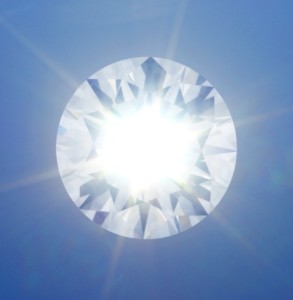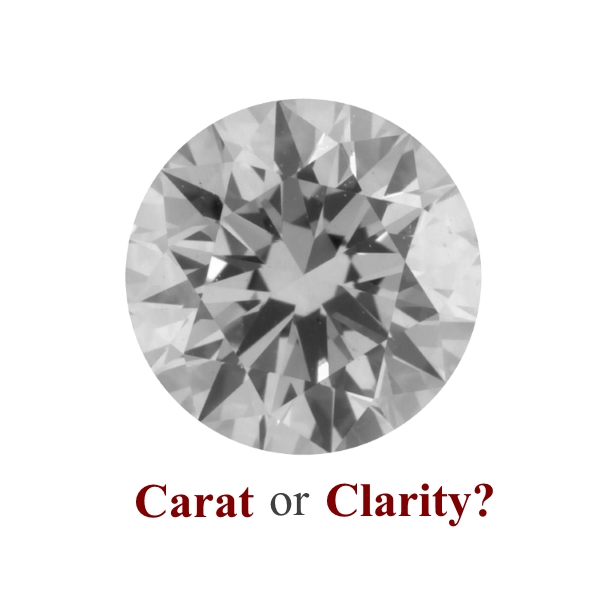What Is Diamond Light Performance?
Diamond light performance is a term describing how a cut and polished stone reflects and bends light.

When it enters a diamond, light can either be reflected or leak out of the stone.
The reflected light produces brilliance and makes the diamond look bright, while the light that leaks out remains unseen.
Stones with superior light performance return most of the light entering them, and to an observer, such diamonds looks brilliant and sparkly.
What Affects the Light Performance of Diamonds?
The most important determinant of light performance is cut.
The stone’s clarity and the setting the diamond is placed in also play a role, but the proportions the stone is cut in influence how it reflects and bends light the most.
The proportions that maximize the light performance of round diamonds constitute the so-called ideal cut.
This is why the cut of a round stone is graded according to how close it is to the ideal diamond cut, and stones with the highest grade on this parameter are very expensive.
Components of Diamond Light Performance
The four major components of diamond light performance are brilliance, fire, scintillation, and contrast.
Brilliance refers to how well the diamond reflects light. Stones with a superior cut reflect most of the light entering them, while poorly cut diamonds leak out most of it and look dull.
Fire (also called dispersion) is the visual effect produced when light in the diamond is broken down by its facets into spectral colors.
Scintillation (or sparkle) refers to the flashes of light seen when the stone or the observer moves.
Contrast is the pattern of bright and dark spots that can be seen when a diamond is looked at from the top.
Evaluating the Light Performance of Diamonds
The most straightforward way to evaluate the light performance of a diamond is to observe it under different lighting conditions.
If you are trying to choose a diamond to buy, you can look at different stones and compare them on their brilliance, fire, sparkle, and contrast.
Alternatively, if you know the cut grades of several different stones, you can assume that the better-cut ones will have superior light performance compared with stones whose cut has a lower grade.
(Of course, this is assuming that the diamonds do not differ dramatically on color or clarity.)
Light performance can also be evaluated by using special equipment that measures how a stone reflects light and how much of it leaks out.
For example, the American Gem Society (A.G.S.) uses such a methodology to grade the light performance of diamonds.
The A.G.S. has actually introduced a tool that measures light performance – the so-called ASET device (ASET stands for Angular Spectrum Evaluation Theory).
If your jeweler has such a device, you could ask to look at diamonds through it and see how it displays a colored map of their light performance.
Where to Buy Diamond Jewelry?
We recommend James Allen (read review) because you can see a 360-degree video for any diamond before buying it.
Blue Nile is another reputable diamond retailer we recommend.














